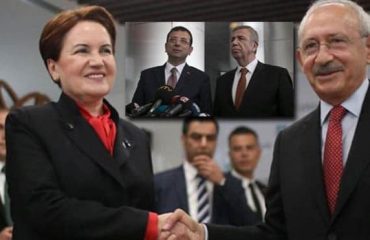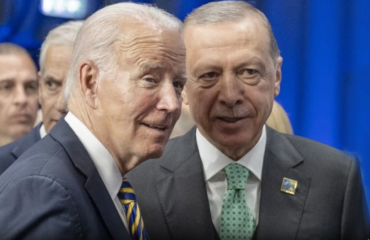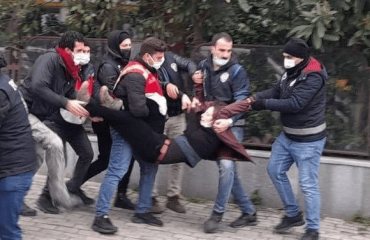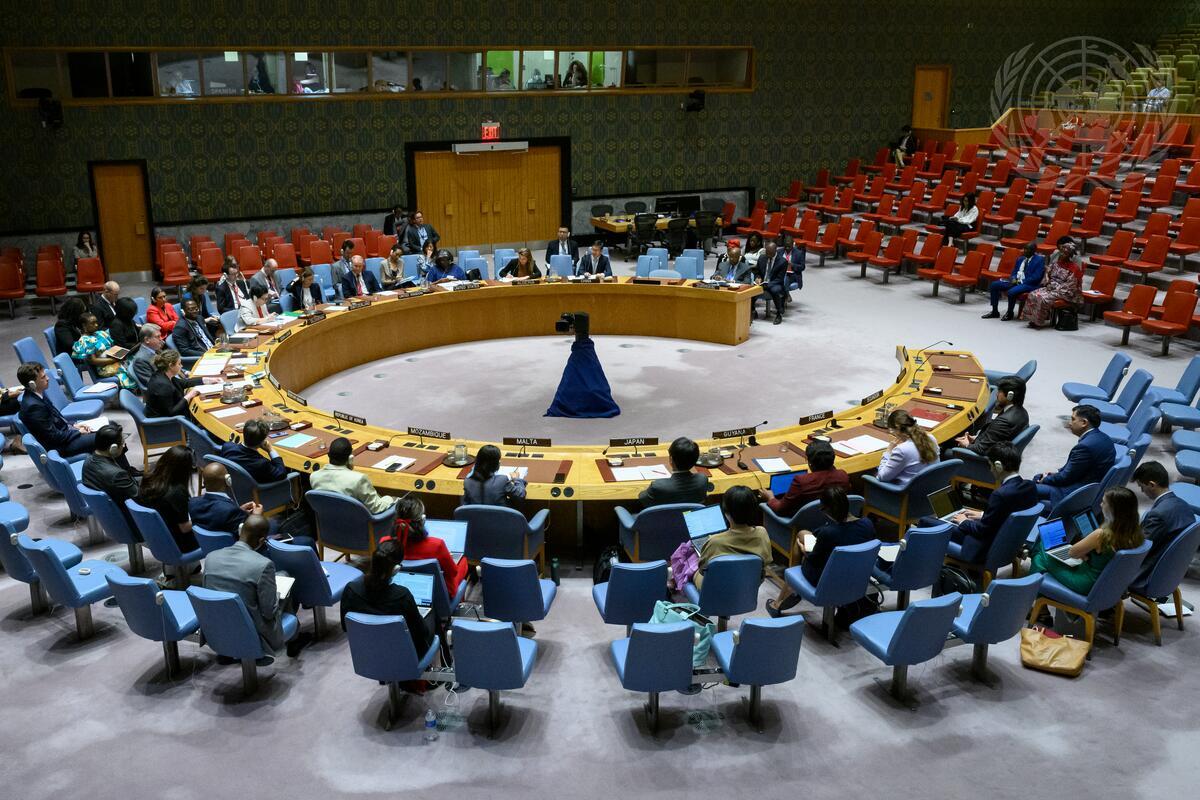
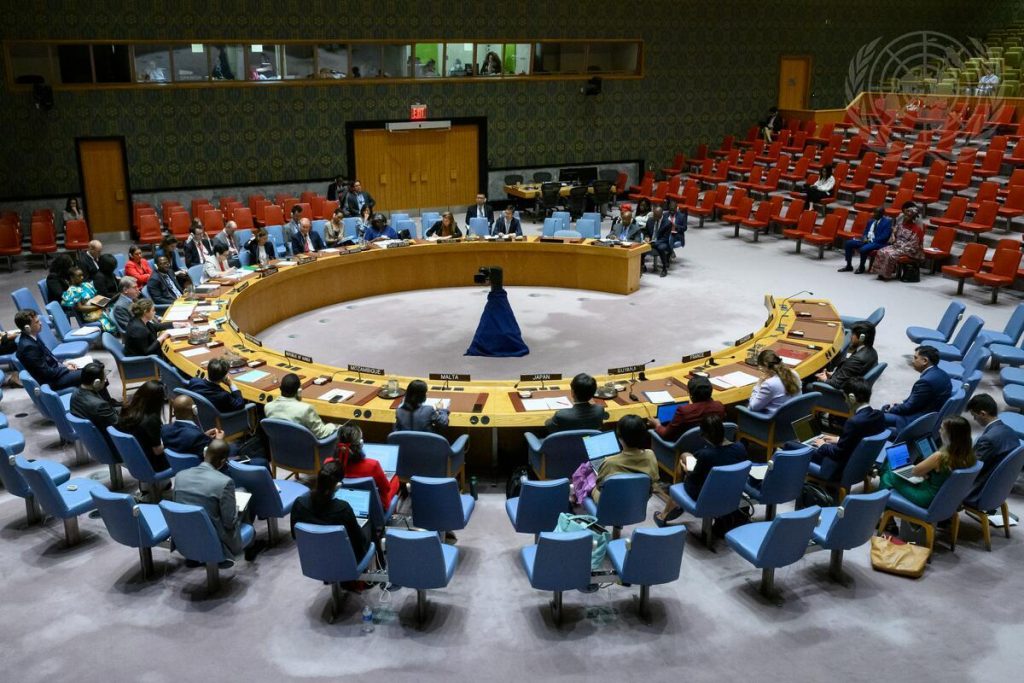
Reading the open letter by UN Cyprus Special Representative María Ángela Holguín Cuéllar, one cannot help but savor the irony. After six months of effort, Holguín concludes that we must “think differently” to solve the Cyprus problem. Really? (UN Photo/Loey Felipe)
Reading the open letter by UN Cyprus Special Representative María Ángela Holguín Cuéllar, one cannot help but savor the irony. After six months of effort, Holguín concludes that we must “think differently” to solve the Cyprus problem. Really? Did it take six months to grasp a truth that has been glaringly obvious for decades?
On July 10, Holguín presented her report to UN Secretary-General António Guterres. During a press briefing on July 11, Secretary-General’s Spokesperson Stéphane Dujarric stated that Guterres is now reviewing Holguín’s recommendations to propose the next steps to the Greek Cypriot and Turkish Cypriot leaders. This development adds another layer to the ongoing saga of the Cyprus issue.
Two-State solution and federation: Dreams or nightmares?
Searching for a solution in Cyprus is like chasing a fairy tale. On one hand, the goal of a bizonal, bicommunal federation has remained an unattainable dream for years. Everyone knows that this goal is more of a fantasy than a realistic target. On the other hand, the two-state solution is dismissed outright as an unrealistic demand. So, when both options are impractical, what kind of solution can be found?
Holguín’s letter reveals a truth that has been reiterated time and again: the negotiating ground in Cyprus is not solid. On one side, the Greek Cypriots hide behind the title of the Republic of Cyprus, pretending to engage in federation talks while merely playing for time to maintain the status quo. On the other side, the Turkish Cypriots advocate for a two-state solution, fully aware that their proposal will not be taken seriously. Wasn’t it obvious from the start that no common ground could be found?
Lost hopes in the labyrinth
Holguín’s letter symbolizes the lost hopes in the labyrinth of negotiations. Efforts to build trust seem almost futile in an environment where both sides are more interested in preserving the status quo. The Greek Cypriots, clinging to the title of the Republic of Cyprus, delay real negotiations under the guise of federation talks. Meanwhile, the Turkish Cypriots, pushing for a two-state solution, make a demand they know will be dismissed.
The July 11 Security Council discussions on the UN Peacekeeping Force in Cyprus (UNFICYP) highlight the stalemate in the Cyprus issue. Both sides’ leaders, Nikos Christodoulides and Ersin Tatar, are awaiting an invitation from the UN Secretary-General, which is expected to clarify his upcoming strategy. This invitation will likely arrive before September.
Holguín’s open letter: A caricature of the Cyprus issue
Holguín’s letter reads like a caricature of the Cyprus problem. Spending six months trying to build trust between parties that are not genuinely interested in changing the status quo almost seems laughable. The underlying theme of the letter is clear: both sides prefer to maintain the current situation rather than find a real solution. The dream of federation remains a fantasy, while the two-state solution is dismissed as unrealistic.
Holguín’s report and the Secretary-General’s review process, as Dujarric noted, contribute to the comedy of errors. The Cypriot leaders, aware of the review process, are waiting for Guterres to outline his future plans in a proposed meeting. This meeting, expected in late summer or early autumn, underscores the cyclical nature of the negotiations.
Adding to the drama, there are claims that the Secretary-General might pressure both sides to explore mutually acceptable formulas, including a confederal resolution. This potential shift in strategy suggests that a new round of talks could begin as early as October. Given the entrenched positions of both sides, the feasibility of this approach is questionable.
July 20: Commemoration and show of muscle
This year, July 20 will mark a unique atmosphere in Cyprus, commemorating the 50th anniversary of Türkiye’s 1974 Operation. Greek Prime Minister Kyriakos Mitsotakis will be in the Greek Cypriot controlled part to condemn Türkiye’s intervention, while Turkish President Recep Tayyip Erdoğan, CHP leader Özgür Özel, and MHP leader Devlet Bahçeli will be in the Turkish administered northern Cyprus to celebrate. The speeches made by these leaders could significantly influence the current situation and future negotiations.
The ceremonies will feature military displays on land, sea, and air, showcasing the power dynamics in the Eastern Mediterranean. The flagship of the Turkish Navy, TCG Anadolu, will visit the port of Northern Cyprus, leading a naval parade of 50 ships. Additionally, F-16 fighter jets will conduct flyovers, and the Turkish Stars aerobatic team will perform.
Is a realistic solution possible?
So, is a realistic solution that both sides can agree on possible? Given that both sides are more interested in maintaining the status quo, the possibility of a real solution seems distant. Real change requires a willingness to alter the current situation, something neither side appears ready for. Perhaps the most significant message in Holguín’s letter is not the call to think differently, but the implicit acknowledgment that changing the status quo seems nearly impossible.
The Secretary-General’s likely two-pronged approach—inviting leaders to outline his intentions and then engaging in substantive discussions—may appear promising, but history suggests otherwise. For real progress, the leaders must demonstrate genuine will and determination, a sentiment echoed in Holguín’s letter.
Bitter reality
Holguín’s letter calls for a new approach to solving the Cyprus problem, but after six months, it reiterates an old truth: real change in Cyprus requires both sides to show a genuine desire for resolution. However, with both sides committed to maintaining the current situation, meaningful progress seems improbable.
The Cyprus problem is caught between the dream of a federation and the failure to take the two-state solution seriously for a start. Holguín’s letter reiterates these realities, perhaps inadvertently underscoring that the search for a solution is a pragmatic rather than a satirical exercise. As the Secretary-General reviews Holguín’s report and determines next steps, progress should be expected, albeit with a healthy dose of skepticism.
